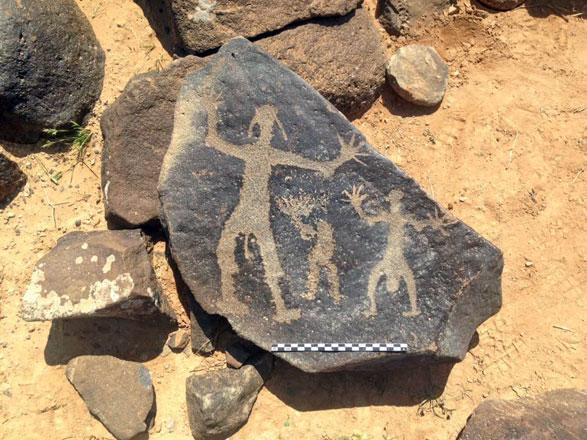Record added successfully



AMMAN — Ancient tombs found in Jordan’s Eastern Desert indicate a “flourishing” culture that managed to adapt to the harsh conditions of the landscape, according to a Dutch professor investigating the tombs.
There are at least three types of tombs in the Eastern Desert, named ring cairns, tower tombs and cist graves, said Peter Akkermans, Dutch professor of archaeology from Leiden University.
“They were built 2,000-3,000 years ago... The first type of tombs, the ring cairns, are up to 10m in diameter and 2m in height,” said Akkermans, the director of the Jebel Qurma Archaeological Landscape Project, who has been working in the Eastern Desert for eight years.
The first type of graves, he continued, had an oval, corbelled burial chamber in the centre, surrounded by an outer ring of large basalt boulders, adding: “The second type of grave consists of so-called tower tombs: round structures up to 5m in diameter and 1.5m in height, with a distinct tower-like shape and a clear, straight facade made of large basalt blocks which were each up to 300-400kg in weight. The third type consists of cist tombs, which were rectangular graves up to 2.5m long, 1.5m wide and 1m high.”
Moreover, inside the tombs were the skeletal remains of the deceased. Most tombs were meant for a single interment, although occasionally two or more people (adults and children) were buried in them, he explained.
Basically, scholars mainly deal with graves built above ground, which usually means skeletal remains are poorly preserved, the professor elaborated, noting that the ancient piece of wisdom, “for dust you are and to dust you will return”, should be taken word-for-word in the desert.
Grave goods
Regarding burial practices in the Eastern Desert, the deceased were usually (but not always) accompanied by some simple grave goods, such as beads made of colourful stone, bone, shell and glass paste, he emphasised, adding that sometimes they also find weaponry in the graves, in the shape of one or more iron arrowheads and javelins.
Both the tombs and the grave goods in the Eastern Desert are very modest, without any explicit signs of elites or social ranking, he continued, adding: “The tombs appear to be highly similar from one to the other, indicative of a small-scale and egalitarian, probably family-based social organisation of the desert groups in antiquity.”
Furthermore, the desert communities themselves may have produced some of the beads and other jewellery found in the burials, by working local stone, ostrich eggshells and snail shells.
“However, other objects must have arrived at the desert sites through exchange with the urban communities of western Jordan, Syria and Egypt. It is, however, clear from our research that the desert groups were highly autonomous and independent in social and economic terms. They were only to a limited extent integrated in the kingdoms and empires of their time,” Akkermans underscored.
Nevertheless, Akkermans said scholars should assume that the people in the desert during antiquity were marginalised and peripheral.
“From their perspective, the notion of marginality may have been of no meaning whatsoever: marginal to whom or what? Why would they consider themselves to be living on the margins, as they were able to successfully sustain a long-lived desert culture that was fully adapted to a difficult terrain and climate?” the scholar asked.
“The evidence of this flourishing culture can be seen, among other things, in the diverse and complex burial record which we are currently investigating,” Akkermans concluded.
Source: www.jordantimes.com